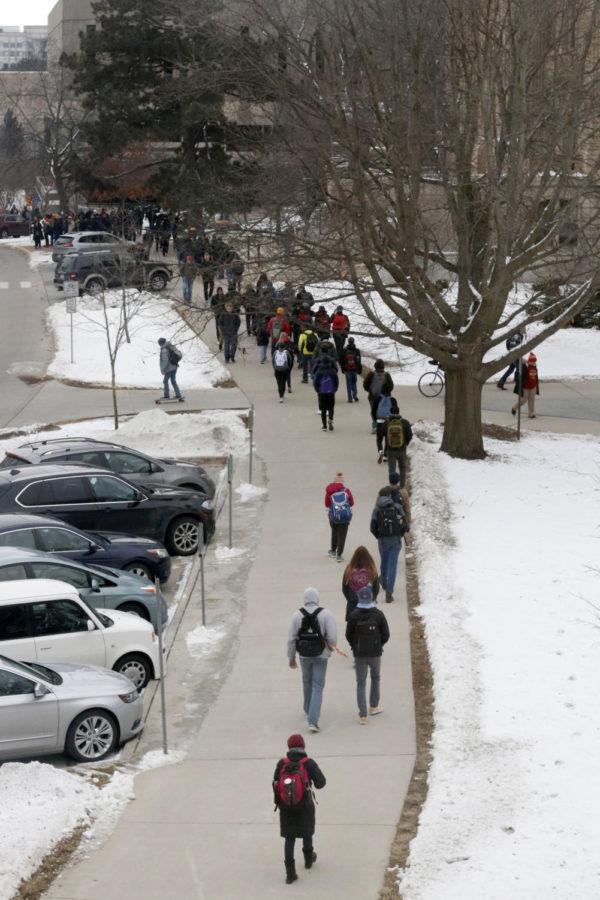Campus climate survey aims to improve Iowa State
Gillian Holte/Iowa State Daily
Iowa State students and faculty walk to and from class Jan. 16.
March 14, 2019
Every Iowa State student has received an email with a link to the 2019 Campus Climate Survey. The national survey is led by the Association of American Universities (AAU), and Iowa State is one of 33 institutions to participate in the survey this year.
The main goal of the survey is to shape policies and promote the best policies for Iowa State’s campus. This survey was given to Iowa State students in 2015 and was brought back again this year to further analyze our campus environment.
Iowa State’s campus climate website revealed the outcomes the 2015 survey results produced. The key outcomes included an increased education on Title IX, improvements to the Sexual Misconduct Policy, implementation of the campus sexual assault prevention programming and the expansion of resources for response to community allegations of assaults.
“I think it’s important not only for the students’ safety, but also for the faculty to be aware of what’s happening on campus and how to interact with the students,” said Victoria Palma, sophomore in journalism.
Students such as Palma believe in the magnitude of this survey and the positive effects it can have in our community.
“That is why students should take the survey,” she said.
When asked about the importance of student participation in this survey, Lucia Burzynski, a sophomore studying kinesiology and health and a community adviser in Larch Residence Hall, said she believes the survey is important.
“It’s important for the student opinion to be heard, especially when it comes to serious topics like sexual assault because those are experiences that we live,” Burzynski said. “I also think it’s an educational opportunity for people who don’t think that that type of stuff is salient in our community to realize this is apart of our campus climate.”
After the close of the Campus Climate Survey on March 31, Westat Social Science Research Firm will calculate Iowa State’s results.
According to Inside Iowa State, Margo Foreman, assistant vice president for Diversity and Inclusion as well as Equal Opportunity and Title IX Coordinator, said, “We will gain comparative data that will reveal how students’ perceptions have changed over time and show where we need to concentrate our efforts and resources in the future. This also will allow us to compare our results to those of other universities.”







